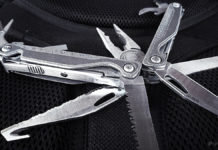
Heat wrap exhaust tape is a staple in the world of automotive performance and maintenance. Often seen wrapped around the exhaust headers and pipes of high-performance vehicles, this tape offers numerous benefits, from improving engine efficiency to protecting other components from excessive heat. This article explores the intricacies of heat wrap exhaust tape, its advantages, application methods, and best practices for maximizing its potential.
What is Heat Wrap Exhaust Tape?

Heat wrap exhaust tape is a specially designed thermal barrier made from materials such as fiberglass, basalt (volcanic rock), or a combination of synthetic fibers. Its primary purpose is to insulate the exhaust system, reducing the amount of heat radiated by the exhaust pipes. This insulation helps in several ways, enhancing the overall performance and longevity of a vehicle.
Benefits of Heat Wrap Exhaust Tape
- Improved Engine Performance: One of the most significant benefits of using heat wrap exhaust tape is the improvement in engine performance. By keeping the exhaust gases hotter, the tape helps to maintain a higher exhaust velocity. This, in turn, can lead to improved scavenging of exhaust gases from the cylinders, allowing for a more efficient intake of fresh air and fuel. The result is a potential increase in horsepower and torque.
- Reduced Under-Hood Temperatures: Heat wrap exhaust tape effectively reduces the amount of heat radiated by the exhaust system into the engine bay. Lower under-hood temperatures can help protect sensitive components, such as ignition wires, sensors, and plastic parts, from heat damage. It also contributes to a cooler air intake, which can further enhance engine performance.
- Enhanced Durability of Exhaust Components: By insulating the exhaust pipes, heat wrap exhaust tape can protect them from thermal shock and reduce the likelihood of cracks and corrosion. This can extend the life of the exhaust system, making it a cost-effective investment for vehicle owners.
- Increased Driver Comfort: For motorcycles and off-road vehicles, where the exhaust pipes are often exposed, heat wrap can provide a buffer between the hot pipes and the rider or passenger. This can prevent burns and make for a more comfortable ride.
Application of Heat Wrap Exhaust Tape
Applying heat wrap exhaust tape may seem straightforward, but it requires careful preparation and attention to detail to achieve the best results. Here’s a step-by-step guide:
1. Preparation:
- Clean the Exhaust Pipes: Before applying the tape, ensure the exhaust pipes are clean and free of grease, dirt, and rust. Use a degreaser and a wire brush to prepare the surface.
- Measure and Cut the Tape: Measure the length of the pipes to determine how much tape you’ll need. Cut the tape into manageable lengths, usually around three to five feet, to make wrapping easier.
2. Soak the Tape:
- Soaking the tape in water makes it more flexible and easier to handle. This step also helps the tape conform better to the contours of the pipes, ensuring a snug fit.
3. Wrapping:
- Start at the Flange: Begin wrapping at the flange or the end closest to the engine. Secure the starting point with a stainless steel zip tie or a clamp.
- Overlap Each Wrap: As you wrap the tape around the pipe, overlap each layer by about ¼ to ½ inch. This overlap ensures complete coverage and maximum insulation.
- Maintain Tension: Keep the tape under tension as you wrap to prevent it from loosening over time. Smooth out any wrinkles or bubbles as you go.
4. Securing the Tape:
- Once you reach the end of the pipe, secure the final wrap with another stainless steel zip tie or clamp. Trim any excess tape for a clean finish.
5. Curing:
- After the wrap is applied, it needs to cure to achieve its full effectiveness. Start the engine and let it idle until the exhaust reaches operating temperature. You might notice some smoke or odor during this process, which is normal and will dissipate as the wrap cures.
Best Practices and Tips

- Safety First: Always wear gloves and safety glasses when handling heat wrap exhaust tape. The fibers can be irritating to the skin and eyes.
- Quality Matters: Invest in high-quality heat wrap tape from reputable brands. Cheap or low-quality tape may not provide the same level of insulation and durability.
- Regular Inspection: Periodically inspect the wrap for signs of wear or damage, especially if you drive in harsh conditions. Replace any worn sections to maintain optimal performance.
- Consider Heat Shields: In some cases, combining heat wrap with heat shields can provide additional protection for sensitive components. This dual approach can be particularly beneficial in high-performance applications.
Conclusion
Heat wrap exhaust tape is a valuable tool for enhancing the performance, efficiency, and longevity of your vehicle’s exhaust system. Whether you’re a car enthusiast looking to squeeze every bit of power from your engine or a motorcycle rider seeking to protect yourself from hot pipes, heat wrap exhaust tape offers a practical solution. By understanding its benefits, following proper application methods, and adhering to best practices, you can ensure that your heat wrap performs effectively and stands the test of time.















